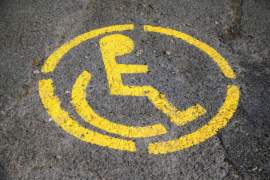
What Are Card Not Present Transactions

Card Not Present transactions are those in which the credit card need not be physically present for the transaction to occur. They were actually in existence for quite some time before the advent of the Internet, as mail-order purchases would inherently be Card Not Present transactions, requiring credit card information without having the actual credit card. Telephone purchases would also qualify as Card Not Present purchases, seeing as the information of the card need only be shared over the phone to make the purchase, and the actual card need not be physically present. But the majority of modern-day Card Not Present transactions occur on the Internet. The unfortunate aspect of Card Not Present transactions is that they are all too easy to take advantage of with Card Not Present fraud. The primary problem of Card Not Present transactions is that there is no way to verify if the purchaser, giving out the information, is the actual owner of the card. Since the transaction does not require the physical card, and over the Internet would require nothing more than correctly filling out the blanks in the order form, there is no real way to check the actual identity of the purchaser. Any verification questions could have their answers stolen right along with the credit card information. One recent form of defense against Card Not Present fraud involves the use of specified, pre-accepted delivery locations. If for any given credit account, the owner sets up a number of acceptable shipping locations that are linked to that account, then ordering from any given website would only send to one of these pre-approved locations. Thus, while a form of Card Not Present fraud would persist, if only because purchases could still be made against the card holder's will, those purchases could only be sent to locations which are likely safe from the card holder's point of view. A Card Not Present fraud perpetrator, in this instance, would likely be unable to do more than order items to the card holder's home. Unfortunately, in general, Card Not Present transactions are likely to be too small to be considered worth investigating. Obviously, some transactions will require a bit of an examination because they will be transactions for great enough values of money, but the vast majority of Card Not Present transactions on the Internet will likely be too small to fall on the radar of investigators. This is a fact that fraudsters have taken advantage of time and time again, as the lax security features on smaller transactions allow them to penetrate these transactions and obtain what they need for Card Not Present fraud. Customers aren't the only ones at risk, either. Sellers themselves must pay a higher price to use Card Not Present service, as Card Not Present transactions are inherently more risky than standard transactions. Coupled with these higher costs comes the threat of lost business with cases of Card Not Present fraud. Such fraud would hurt the merchant as much as the victim of the fraud, as the merchant would be giving out his goods to the perpetrator, and then the sale would later be cancelled, leaving the seller with nothing to compensate for the lost goods. As a whole, then, Card Not Present transactions are those transactions around which both buyers and sellers must tread most carefully.



















